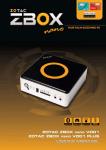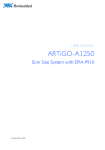Download AMOS-3002
Transcript
USER MANUAL AMOS-3002 Compact Fanless Embedded System 1.01-07022012-145400 Copyright Copyright © 2012 VIA Technologies Incorporated. All rights reserved. No part of this document may be reproduced, transmitted, transcribed, stored in a retrieval system, or translated into any language, in any form or by any means, electronic, mechanical, magnetic, optical, chemical, manual or otherwise without the prior written permission of VIA Technologies, Incorporated. Trademarks All trademarks are the property of their respective holders. PS/2 is a registered trademark of IBM Corporation. Disclaimer No license is granted, implied or otherwise, under any patent or patent rights of VIA Technologies. VIA Technologies makes no warranties, implied or otherwise, in regard to this document and to the products described in this document. The information provided in this document is believed to be accurate and reliable as of the publication date of this document. However, VIA Technologies assumes no responsibility for the use or misuse of the information in this document and for any patent infringements that may arise from the use of this document. The information and product specifications within this document are subject to change at any time, without notice and without obligation to notify any person of such change. VIA Technologies, Inc. reserves the right the make changes to the products described in this manual at any time without prior notice. Regulatory Compliance FCCFCC-A Radio Frequency Interference Statement This equipment has been tested and found to comply with the limits for a class A digital device, pursuant to part 15 of the FCC rules. These limits are designed to provide reasonable protection against harmful interference when the equipment is operated in a commercial environment. This equipment generates, uses, and can radiate radio frequency energy and, if not installed and used in accordance with the instruction manual, may cause harmful interference to radio communications. Operation of this equipment in a residential area is likely to cause harmful interference, in which case the user will be required to correct the interference at his personal expense. Notice 1 The changes or modifications not expressly approved by the party responsible for compliance could void the user's authority to operate the equipment. Notice 2 Shielded interface cables and A.C. power cord, if any, must be used in order to comply with the emission limits. Tested To Comply With FCC Standards FOR HOME OR OFFICE USE Battery Recycling and Disposal Only use the appropriate battery specified for this product. Do not re-use, recharge, or reheat an old battery. Do not attempt to force open the battery. Do not discard used batteries with regular trash. Discard used batteries according to local regulations. Safety Precautions Always read the safety instructions carefully. Keep this User's Manual for future reference. All cautions and warnings on the equipment should be noted. Keep this equipment away from humidity. Lay this equipment on a reliable flat surface before setting it up. Make sure the voltage of the power source and adjust properly 110/220V before connecting the equipment to the power inlet. Place the power cord in such a way that people cannot step on it. Always unplug the power cord before inserting any add-on card or module. If any of the following situations arises, get the equipment checked by authorized service personnel: The power cord or plug is damaged. Liquid has penetrated into the equipment. The equipment has been exposed to moisture. The equipment has not worked well or you cannot get it work according to User's Manual. The equipment has dropped and damaged. The equipment has obvious sign of breakage. Do not leave this equipment in an environment unconditioned or in a storage temperature above 70°C (158°F). The equipment may be damaged. Never pour any liquid into the opening. Liquid can cause damage or electrical shock. Do not place anything over the power cord. Do not cover the ventilation holes. The openings on the enclosure protect the equipment from overheating. AMOSAMOS-3002 User Manual Packing Lists 1 x AMOS-3002 unit 1 x VESA Mount bracket 2 x Wall Mount bracket 1 x Power Cable, 2-Pole Phoenix Plug to DC-Jack 1 x Thermal pad for memory 1 x Thermal pad for CFast 4 x Bottom Washer Rubber 1 x HDMI® to DVI-D adapter Cable Ordering Information AMOSAMOS-30023002-1D10A1 1D10A1 ® 1.0GHz Eden™ X2 CPU based Fanless Embedded system, with VGA, HDMI , 6xUSB 2.0 (2 x lockable), 2xCOM, 2xGbE, 1xSpeaker, MIC-in, 1xGPIO, DC-in 12V Optional Accessories External ACAC-toto-DC Adapter and Power Cable Model Number Description 99G63-020216 Power adapter input 100V-240V; output 12V, 60W, with 2-pin phoenix connector, pitch=3.81mm 99G63-020316 Power adapter input 100V-240V; output 12V, 60W, with 2-pin phoenix connector, pitch=3.81mm 99G33-02032C Power Cord, 180 cm, USA type 99G33-02033C Power Cord, 180 cm, Europe type 99G33-02031C Power Cord, 180 cm, UK type iv AMOSAMOS-3002 User Manual Table of Contents 1. Product Overview ................................................................ ................................................................................................ ................................................................ 1 1.1. Key Features................................................................................................... 1 1.2. Product Specifications................................................................................. 3 1.2.1. Computing System.................................................................................. 3 1.2.2. Memory ..................................................................................................... 3 1.2.3. Graphics .................................................................................................... 4 1.2.4. Gigabit Ethernet ...................................................................................... 4 1.2.5. HD Audio.................................................................................................. 4 1.2.6. Serial .......................................................................................................... 5 1.2.7. GPIO........................................................................................................... 5 1.2.8. Storage ...................................................................................................... 5 1.2.9. System Indicator ...................................................................................... 5 1.2.10. Watch Dog Timer.................................................................................... 6 1.2.11. Expansion.................................................................................................. 6 1.2.12. Front Panel External I/O connectors .................................................. 6 1.2.13. Rear Panel External I/O connectors.................................................... 7 1.2.14. Power Supply........................................................................................... 7 1.2.15. Mechanical................................................................................................ 8 1.2.16. Environmental Specification ................................................................. 8 1.2.17. Software Compatibility.......................................................................... 9 1.3. Product Dimensions................................................................................... 10 2. I/O Interface................................ Interface................................................................ ................................................................................................ ........................................................................ ........................................ 11 2.1. External I/O Ports ....................................................................................... 11 2.1.1. Power Button ......................................................................................... 13 2.1.2. DC-In Power Input Connector ........................................................... 13 2.1.3. LED Indicators ........................................................................................ 14 2.1.4. Audio Jacks............................................................................................. 15 2.1.5. COM Connector.................................................................................... 16 2.1.6. USB 2.0 Ports.......................................................................................... 17 2.1.7. Lockable USB 2.0 Ports........................................................................ 18 v AMOSAMOS-3002 User Manual 2.1.8. 2.1.9. 2.1.10. 2.1.11. 2.1.12. 2.1.13. SIM socket............................................................................................... 19 CFast Socket ........................................................................................... 19 DIO........................................................................................................... 20 VGA Connector..................................................................................... 21 Gigabit Ethernet Port............................................................................ 22 HDMI® Port............................................................................................. 23 3. Hardware Installation ................................................................ ........................................................................................ ........................................................ 25 3.1. How to install SODIMM memory module........................................... 25 3.2. How to remove the cover........................................................................ 28 3.3. How to install 3G and GPS kit ................................................................ 30 3.4. How to install WLAN kit .......................................................................... 33 3.5. How to install CFast Card ........................................................................ 36 3.6. How to install CFast thermal pad .......................................................... 37 3.7. How to install SIM Card ........................................................................... 39 3.8. How to install the Mounting Brackets................................................... 40 3.9. How to install the VESA plate................................................................ 42 4. BIOS Setup................................ Setup................................................................ ................................................................................................ .......................................................................... .......................................... 45 4.1. Entering the BIOS Setup Menu................................................................ 45 4.2. Control Keys................................................................................................ 45 4.3. Getting Help................................................................................................ 46 4.4. System Overview........................................................................................ 46 4.4.1. AMIBIOS.................................................................................................. 46 4.4.2. Processor................................................................................................. 46 4.4.3. System Memory ..................................................................................... 47 4.4.4. System Time ........................................................................................... 47 4.4.5. System Date............................................................................................ 47 4.5. Advanced Settings ..................................................................................... 48 4.5.1. CPU Configuration ................................................................................ 49 4.5.2. IDE Configuration .................................................................................. 50 4.5.3. SuperIO Configuration ......................................................................... 51 4.5.4. ACPI Configuration ............................................................................... 52 vi AMOSAMOS-3002 User Manual 4.5.5. APM Configuration................................................................................ 54 4.5.6. Spread Spectrum Configuration ........................................................ 57 4.5.7. USB Configuration................................................................................. 58 4.5.8. CRB Configuration................................................................................. 59 4.6. Boot Settings ............................................................................................... 61 4.6.1. Boot Settings Configuration................................................................ 62 4.6.2. Boot Device Priority.............................................................................. 64 4.7. Security Settings ......................................................................................... 65 4.7.1. Change Supervisor Password ............................................................. 65 4.7.2. User Access Level................................................................................. 65 4.7.3. Change User Password ........................................................................ 66 4.7.4. Clear User Password ............................................................................ 66 4.7.5. Password Check .................................................................................... 67 4.8. Exit Options................................................................................................. 68 4.8.1. Save Changes and Exit ......................................................................... 68 4.8.2. Discard Changes and Exit.................................................................... 68 4.8.3. Discard Changes.................................................................................... 68 4.8.4. Load Optimal Defaults ........................................................................ 69 5. Driver Installation................................ Installation................................................................ ............................................................................................... ............................................................... 71 5.1. Microsoft Driver Support.......................................................................... 71 5.2. Linux Driver Support.................................................................................. 71 6. Troubleshooting Troubleshooting................................ ing ................................................................ ................................................................................................ ................................................................. ................................. 73 vii AMOSAMOS-3002 User Manual Lists of Figures Figure 1: AMOS-3002 Dimensions - Front view....................................................... 10 Figure 2: AMOS-3002 Dimensions - Side view ........................................................ 10 Figure 3: Front I/O panel ............................................................................................... 11 Figure 4: Rear I/O panel................................................................................................. 12 Figure 5: Power button diagram .................................................................................. 13 Figure 6: Power input connector pinout diagram .................................................... 13 Figure 7: System LED indicators ................................................................................... 14 Figure 8: Audio jack receptacle stack......................................................................... 15 Figure 9: COM connector pinout diagram................................................................. 16 Figure 10: USB 2.0 port pinout diagram..................................................................... 17 Figure 11: Lockable USB port pinout diagram.......................................................... 18 Figure 12: CFast socket diagram................................................................................... 19 Figure 13: CFast socket diagram................................................................................... 19 Figure 14: DIO port pinout diagram ........................................................................... 20 Figure 15: VGA connector pinout diagram ............................................................... 21 Figure 16: Gigabit Ethernet port pinout diagram ..................................................... 22 Figure 17: HDMI port pinout diagram ........................................................................ 23 Figure 18: Illustration of the Main menu screen....................................................... 46 Figure 19: Illustration of the Advanced Settings screen......................................... 48 Figure 20: Illustration of the CPU Configuration screen......................................... 49 Figure 21: Illustration of IDE Configuration screen.................................................. 50 Figure 22: Illustration of SuperIO Configuration screen......................................... 51 Figure 23: Illustration of ACPI Configuration screen ............................................... 52 Figure 24: Illustration of APM Configuration screen ............................................... 54 Figure 25: Illustration of CPU Spread Spectrum Configuration screen............... 57 Figure 26: Illustration of USB Configuration screen ................................................ 58 Figure 27: Illustration of CRB Configuration screen................................................. 59 Figure 28: Illustration of Boot Settings screen.......................................................... 61 Figure 29: Illustration of Boot Settings Configuration screen................................ 62 Figure 30: Illustration of the Boot Device Priority screen ...................................... 64 Figure 31: Illustration of Security Settings screen.................................................... 65 viii AMOSAMOS-3002 User Manual Figure 32: Illustration of Exit Options screen ........................................................... 68 ix AMOSAMOS-3002 User Manual Lists of Tables Table 1: Power input connector pinout..................................................................... 13 Table 2: Audio jack receptacle pinout....................................................................... 15 Table 3: COM connector pinout ................................................................................. 16 Table 4: USB 2.0 port pinout........................................................................................ 17 Table 5: Lockable USB port pinout............................................................................. 18 Table 6: DIO port pinout .............................................................................................. 20 Table 7: VGA connector pinout .................................................................................. 21 Table 8: Gigabit Ethernet port pinout ........................................................................ 22 Table 9: HDMI port pinout ........................................................................................... 23 x AMOSAMOS-3002 User Manual 1. Product Overview The AMOS-3002 is a fanless and ultra compact embedded system, which supports intensive I/O functions for diversified embedded applications. Based on the VIA Pico-ITX form factor, its innovative design helps to simplify the efforts of embedded system integration. The AMOS-3002 carries a qualified thermal performance design that allows a wide range of operating temperatures — making it suitable for various industrial or embedded applications. The AMOS-3002 is composed of a few main mechanical parts such as top cover, bottom plate, and front and rear I/O access plates, which brings optimization to the system integration. AMOS-3002 offers one SKU: AMOS3002-1D10A1. AMOS-3002-1D10A1 supports CFast socket for CFast flash disk storage. The AMOS-3002-1D10A1 comes with support for wireless communication modules including GPS, 3G and WLAN. 1.1. Key Features A fanless, ultra compact chassis The AMOS-3002 houses the EPIA-P900 Pico-ITX form factor embedded board. With a maximum mounting height of only 49 mm, the AMOS-3002 can be used in space critical installation environments. Stylish, fully sealed metal alloy design The chassis of the AMOS-3002 is composed of four main parts. The stylishly ridged aluminum top cover does double duty and acts as the heatsink of the AMOS-3002. Optimized integration with front and rear I/O access Front and rear I/O access enables the AMOS-3002 to easily support various applications. 1 AMOSAMOS-3002 User Manual Wide Range of Operating Temperatures The AMOS-3002 carries a qualified thermal performance design which allows a wide range of operating temperatures from -20°C up to 60°C, suitable for space and environment critical applications. Shock Resistant The AMOS-3002 is shock resistant to 50G (with CFast Flash disk) for maximum reliability. Display Acceleration The AMOS-3002 supports hardware acceleration of MPEG-2, WMV9/VC1 and H.264 for full HD 1080P display. Storage expansion kit The storage sub-system expansion chassis kit enables the AMOS-3002 to have built-in storage of CFast Flash Disk. Networking options The AMOS-3002 provides Gigabit Ethernet support for high speed data transmission. The optional wireless networking module can provide the AMOS-3002-1D10A1 with the freedom of GPS, 3G and WiFi access. Multiple mounting solutions The AMOS-3002 supports multiple methods for mounting the chassis securely. The rugged industrial PC can be mounted to a table, wall, or even to VESA mountable surfaces with the VESA mounting kit. Moreover, AMOS can be mounted to table or wall using the mounting brackets Embedded OS ready The AMOS-3002 is 100% compatible with several operating systems including Microsoft Widows XP, Windows 7, Windows Embedded Standard, Windows Embedded Standard 7 and Linux. 2 AMOSAMOS-3002 User Manual 1.2. Product Specifications 1.2.1. Computing System Processor 1.0 GHz VIA Eden X2 - 800 MHz Front Side Bus - 2 MB L2 Cache Chipset VIA VX900H advanced all-in-one system processor AMI 8MBit SPI Flash BIOS BIOS System Power Management Wake-on LAN, Keyboard Power-on, Timer Power-on, System power management, AC power failure recovery, Watch Dog Timer control 1.2.2. Memory Technology 1 x DDR3 800/1066 204-pin SODIMM socket Maximum Capacity Up to 4GB memory size 3 AMOSAMOS-3002 User Manual 1.2.3. Graphics Controller Integrated VIA Chrome 9™ HD DX9 3D/2D video processor with MPEG-2, WMV9/VC1, H.264 video decoding acceleration Display Memory Optimized Unified Memory Architecture (UMA) Supports up to 512 MB frame buffer using system memory CRT Interface Support 1 x External VGA port by a DB-9 connector Pixel Resolution support up to 2560 x 1600 HDMI® Interface Onboard 1 of HDMI® port connector Dual View Support dual independent views 1.2.4. Gigabit Ethernet Controller AMOS-3002-1D10A1 Built-in two VIA VT6130 Gigabit Ethernet controllers Interface AMOS-3002-1D10A1 Support two RJ45 connectors 1.2.5. HD Audio Controller AMOS-3002-1D10A1 VIA VT2021 High Definition Audio Codec 4 AMOSAMOS-3002 User Manual Interface Support 2 x 3.5Φ Audio Jack as Line-out and Mic-in 1.2.6. Serial USB Support 6 x USB ports, USB 2.0 compliant In the 6 USB ports, of which the two used Lockable USB interface connector for secure connection Serial Ports 2 x COM ports of 1 x RS-232 and 1x RS-232/422/485 (Jumper selectable) 1.2.7. GPIO General Purpose I/O Support 1 x D-Sub 9-pin connector of 8-bit GPIO + 5V power source (4GPI+4GPO) 1.2.8. Storage Flash Interface AMOS-3002-1D10A1 Support 1 x CFast Flash Disk Socket as default HDD Optional support 1 x 2.5” Hard Disk Drive bay by extended chassis of AMOS-3002-2D10A1 1.2.9. System Indicator Power Status LED 1 x Green color LED HDD Activity LED 1 x Red color LED 5 AMOSAMOS-3002 User Manual 1.2.10. Watch Dog Timer Output Interval 1.2.11. System reset Programmable 1~255 sec Expansion Mini PCIe AMOS-3002-1D10A1 1 x MiniPCIe Slot AMOS-3002-1D10A1 1 x SIM Slot SIM 1.2.12. Front Panel External I/O connectors 2 x COM D-Sub 9-pin connectors 2 x USB ports of min-DIN connectors 2 x Lockable USB ports for secure connection 1 x 3.5Φ Audio Jack as Speaker-out 1 x 3.5Φ Audio Jack as Line-in 1 X HDD & PWR LED 1 x 8-bit GPIO D-sub 9-pin connector via cable connection to P900, 2x5 2.0mm pin header 6 AMOSAMOS-3002 User Manual 1 x CFast flash disk slot 1 x SIM slot 1.2.13. 1.2.14. Rear Panel External I/O connectors 1 x VGA connector - D-Sub 15-pin female connector 2 x USB ports of min-DIN connectors 2 x RJ45 connectors of Gigabit Ethernet LAN ports (for AMOS-30021D10A1) 1 x HDMI® connector 3 x Antenna hole for 3G, GPS and WLAN (for AMOS-3002-1D10A1) Power Supply Input Voltage Accept Power Input of DC 12V +/-5% Typical Power Input 12 VDC @1.8A Power Input Connector DC Power Input connector by 2-pole Phoenix connector Power Consumption Typical 20W for AMOS-3002-1D10A1 7 AMOSAMOS-3002 User Manual 1.2.15. Mechanical Construction Aluminum Top Cover Metal Chassis Housing Removable left & right of wall mountable bracket Mounting Wall/VESA mountable Dimensions (W x H x D) 197 (w) x 49 (H) x 104 mm (D) Weight 1.2.16. 1.4 kg ( 3.08lbs) Environmental Specification Operation Temperature -20 °C up to 60°C for 1.0GHz VIA Eden™ X2 Processor (for P/N:AMOS-30021D10A1) 0 °C ~ 45°C when system equipped with 2.5” Hard Disk Drive (for P/N: AMOS-3002-2D10A1) Storage Temperature -20 °C ~ 70 °C Relative Humidity 0 ~ 90% @ 45 °C, non-condensing Vibration Loading During Operation With CFast Flash disk: 5Grms, IEC 60068-2-64, random, 5 ~ 500Hz, 1 Oct./min, 1hr/axis Shock During Operation With CFast Flash disk: 50G, IEC 60068-2-27, half size, 11ms duration EMC Approved CE, FCC Class A, CCC 8 AMOSAMOS-3002 User Manual 1.2.17. Software Compatibility Operating Operating System Microsoft Windows 7 Microsoft Windows XP Microsoft Windows Embedded Standard Microsoft Windows Embedded Standard 7 Linux 9 AMOSAMOS-3002 User Manual 1.3. Product Dimensions Figure 1: AMOSAMOS-3002 Dimensions - Front view Figure 2: AMOSAMOS-3002 Dimensions - Side view 10 AMOSAMOS-3002 User Manual 2. I/O Interface The AMOS-3002 has a wide selection of interfaces integrated into the board. It includes a selection of frequently used ports as part of the external I/O coastline. 2.1. External I/O Ports The AMOS-3002 has external I/O ports placed along both faces of the chassis. Figure 3: Front I/O panel Item Description Item 8 Description 1 Power button (On/Off) USB 2.0 ports 2 HDD LED indicator 9 Lockable USB 2.0 ports 3 Power LED indicator 10 CFast socket (available for AMOS-3002-1D10A1) 4 Mic-In 11 SIM socket (available for AMOS-3002-1D10A1) 5 Line-Out 12 DC power input connector 6 COM1 connector 13 DIO connector 7 COM2 connector 11 AMOSAMOS-3002 User Manual Figure 4: Rear I/O panel panel Item Description Item Description 14 VGA connector 17 3G, GPS and WLAN antenna holes (available for AMOS-3002-1D10A1) 15 USB 2.0 ports 18 Gigabit Ethernet port 2 (LAN2) (available for AMOS-3001-1D10A1) 16 Gigabit Ethernet port 1 (LAN1) 19 HDMI port 12 AMOSAMOS-3002 User Manual 2.1.1. Power Button The AMOS-3002 comes with a power button on the front panel that supports two functions: soft power on/off (instant off or delay 4 seconds), and suspend. Figure 5: Power button diagram 2.1.2. DC-In Power Input Connector The AMOS-3002 comes with a 2-pole Phoenix connector on the front panel that carries 12VDC external power input. Figure 6: Power input connector pinout diagram Pin Signal 1 GND 2 12VDC Table 1: Power input connector pinout 13 AMOSAMOS-3002 User Manual 2.1.3. LED Indicators There are two LEDs on the front panel of the AMOS-3002 that indicate the status of the system: PWR LED is green and indicates the status of the system’s power status. HDD LED is red and indicates any storage activity for the CFast disk. Figure 7: System LED indicators 14 AMOSAMOS-3002 User Manual 2.1.4. Audio Jacks The AMOS-3002 has two 3.5mm TRS audio jacks for Mic-In and Line-Out on the front panel. The MIC-In jack is for connecting to a microphone while the Line-Out jack is for connecting to external speakers or headphones. Figure 8: Audio jack receptacle stack Jack Description Mic-In TRS jack, 3.5mm Ø 5P, 90 Degree, Female, shielded Line-Out TRS jack, 3.5mm Ø 5P, 90 Degree, Female, shielded Table 2: Audio jack receptacle pinout 15 AMOSAMOS-3002 User Manual 2.1.5. COM Connector The AMOS-3002 has two D-sub 9-pin male connectors named COM1 and COM2. The COM1 and COM2 connectors can be configured as RS-232, RS422, or RS-485. However, the default setting of COM1 and COM2 connectors is RS-232. To configure the COM connectors, user needs to setup the BIOS. Figure 9: COM connector pinout diagram Pin RSRS-232 Signal RSRS-422 Signal RSRS-485 Signal 1 DCD Tx- DATA- 2 RxD Tx+ DATA+ 3 TxD Rx+ NC 4 DTR Rx- NC 5 GND GND GND 6 DSR NC NC 7 RTS NC NC 8 CTS NC NC 9 RI NC NC Table 3: COM connector pinout 16 AMOSAMOS-3002 User Manual 2.1.6. USB 2.0 Ports The AMOS-3002 has two external USB ports (USB1 and USB2) on the front panel. Each USB port gives complete Plug and Play and hot swap capability for external devices. The USB interface complies with USB UHCI, Rev. 2.0. 3 4 1 2 Figure 10: 10: USB 2.0 port pinout diagram USB1 USB2 Pin Signal Pin 1 VCC 1 Signal VCC 2 USB data - 2 USB data - 3 USB data + 3 USB data + 4 GND 4 GND Table 4: USB 2.0 port pinout 17 AMOSAMOS-3002 User Manual 2.1.7. Lockable USB 2.0 Ports The AMOS-3002 has two lockable USB ports (USB1 and USB2) on the front panel. Each USB port gives complete Plug and Play and hot swap capability for external devices. The USB interface complies with USB UHCI, Rev. 2.0. Lockable USB port is specially designed to secure USB connection. Figure 11: 11: Lockable USB port pinout pinout diagram USB1 USB2 Pin Signal Pin 1 VCC 1 Signal VCC 2 USB data - 2 USB data - 3 USB data + 3 USB data + 4 GND 4 GND Table 5: Lockable USB port pinout Note: Gently lift the tab before removing the USB from the lockable port. 18 AMOSAMOS-3002 User Manual 2.1.8. SIM socket The AMOS-3002 has SIM socket located on the front panel. Figure 12: 12: CFast socket diagram 2.1.9. CFast Socket The AMOS-3002 has CFast socket located on the front panel. The CFast socket is compatible with Type I and Type II. Figure 13: 13: CFast socket diagram 19 AMOSAMOS-3002 User Manual 2.1.10. DIO AMOS-3002 provides one D-sub 9-pin female connector, which offers Digital IO communication interface port. Figure 14: 14: DIO port pinout diagram Pin Signal Signal 1 GPIO32 2 GPI4 3 GPO12 4 GPI5 5 GPIO9 6 GPI9 7 GPIO12 8 GPI8 9 +5V Table 6: DIO port pinout 20 AMOSAMOS-3002 User Manual 2.1.11. VGA Connector The AMOS-3002 provides a high resolution VGA interface through DE-15 female connector on the rear I/O panel. It supports resolutions up to 2560 x 1600. The pinout of the VGA connector is shown below. Figure 15: 15: VGA connector pinout diagram Pin Signal Pin Signal Pin Signal 1 RED 6 Ground 11 NC 2 GREEN 7 Ground 12 DDC_SPD 3 BLUE 8 Ground 13 HSync 4 NC 9 +5V 14 VSync 5 Ground 10 Ground 15 DDC_SCL Table 7: VGA connector pinout 21 AMOSAMOS-3002 User Manual 2.1.12. Gigabit Ethernet Port The AMOS-3002 system is equipped with two Gigabit Ethernet ports (LAN1 and LAN2) on rear I/O panel. Both ports are fully compliant with IEEE 802.3 (10BASE-T), 802.3u (100BASE-TX), and 802.3ab (1000BASE-T) standards. The pinout of the LAN1 and LAN2 ports are shown below. Figure 16: 16: Gigabit Ethernet port pinout diagram LAN1 LAN2 Pin Signal Pin 1 LAN1_TD0+ 1 Signal LAN2_TD0+ 2 LAN1_TD0- 2 LAN2_TD0- 3 LAN1_TD1+ 3 LAN2_TD1+ 4 LAN1_TD1- 4 LAN2_TD1- 5 LAN1_TD2+ 5 LAN2_TD2+ 6 LAN1_TD2- 6 LAN2_TD3- 7 LAN1_TD3+ 7 LAN2_TD3+ 8 LAN1_TD3- 8 LAN2_TD3- Table 8: Gigabit Ethernet port pinout Both LAN1 and LAN2 are equipped with two LED indicators located to show its active/link status and speed status. LAN LED Status Link LED (Left LED on RJRJ-45 port) Active LED (Right LED on RJRJ-45 port) Active The LED is always On, different LED colors represent LAN connection speed. Flash in Orange color Link The LED is always On, different LED colors represent LAN connection speed. LED is off Speed_10Mbit The LED is always On in Orange color Flash in Orange color Speed_100 Mbit The LED is always On in Green color Flash in Orange color Speed_1000 Mbit The LED is always On in Red color Flash in Orange color 22 AMOSAMOS-3002 User Manual HDMI® Port 2.1.13. The AMOS-3002 has one HDMI® port (19-pin HDMI® Type A receptacle) connector. The HDMI® port is for connecting to HDMI® displays. The pinout of the HDMI® port is shown below. Figure 17: 17: HDMI port pinout diagram Pin Signal Pin Signal 1 HDMITX2+ 2 GND 3 HDMITX2- 4 HDMITX1+ 5 GND 6 HDMITX1- 7 HDMITX0+ 8 GND 9 HDMITX0- 10 HDMITXC+ 11 GND 12 HDMITXC- 13 CEC 14 NC 15 SPCLK 16 SPDAT 17 GND 18 PVDD5 19 -DP1_HPD Table 9: HDMI port pinout 23 AMOSAMOS-3002 User Manual 3. Hardware Installation This chapter provides you with information about hardware installation procedures. It is recommended to use a grounded wrist strap before handling computer components. Electrostatic discharge (ESD) can damage some components. 3.1. How to install SODIMM memory module Step 1 Flip over the AMOS-3002, a memory access cover is located at the bottom side of the unit. Step 2 Remove the 2 screws from the memory access cover and lift up the cover. 25 AMOSAMOS-3002 User Manual Step 3 Insert the memory module into the SODIMM socket at the 30 degree angle. Then push down until the memory module snaps into place. The SODIMM socket has two locking mechanisms that will click once the memory module has been fully inserted. 26 AMOSAMOS-3002 User Manual Step 4 Install the memory thermal pad on the memory module. Step 5 Align the memory access cover with the mounting holes on the chassis. Secure the memory access cover in place with two screws. 27 AMOSAMOS-3002 User Manual 3.2. How to remove the cover Step 1 Flip over the AMOS-3002 unit. Remove the ten screws from the bottom side and both face plates as indicated in the figure below. 28 AMOSAMOS-3002 User Manual Step 2 Turn it back to the top side and lift up the cover slowly and carefully. 29 AMOSAMOS-3002 User Manual 3.3. How to install 3G and GPS kit Step 1 Screw in the hex stand screws (x2) to the daughterboard. Step 2 Align the notch on the miniPCIe module with the notch on the Mini-PCIe slot then insert the module at 30° angle. 30 AMOSAMOS-3002 User Manual Step 2 Once the module has been fully inserted, push down the module until the screw holes align with the mounting holes on the hex spacer screws. Secure the module with two screws to the standoffs. Step 3 Remove the 3G and GPS antenna hole covers from the rear chassis. To facilitate removing the cover, use a pair of needle-nose pliers to depress both locking clips simultaneously. 31 AMOSAMOS-3002 User Manual Step 4 Insert the antenna cables into the 3G and GPS antenna holes from the inside. Make sure the flat side of the antenna jack matches the flat side of the antenna hole. Secure the 3G and GPS antenna jack to the chassis with the toothed washer and nut. Step 5 Connect the mini-coaxial cables of the 3G and GPS port connectors to the mini RF connectors on the 3G and GPS miniPCIe module. 32 AMOSAMOS-3002 User Manual 3.4. How to install WLAN kit Step 1 Secure the WLAN module with two screws to the standoffs. Step 2 Attach the board-to-board cable to the Wi-Fi USB connector on the P900-B daughterboard. Gently attach the other end of the board-to-board cable to the Wi-Fi mini connector on the Wi-Fi module. 33 AMOSAMOS-3002 User Manual Step 3 Remove the Wi-Fi antenna hole cover from the rear chassis. To facilitate removing the cover, use a pair of needle-nose pliers to depress both locking clips simultaneously Step 4 Insert the antenna cable (provided with the WLAN kit) into the WLAN antenna hole from the inside. Make sure the flat side of the antenna jack matches the flat side of the antenna hole. 34 AMOSAMOS-3002 User Manual Step 5 Connect the mini-coaxial cable of the WLAN port connector to the mini RF connector on the WLAN module. 35 AMOSAMOS-3002 User Manual 3.5. How to install CFast Card Step 1 Remove the CFast card cover from the front chassis plate. Step 2 Insert the CFast card into the CFast socket. Ensure the orientation is correct before inserting the card. Install back the CFast socket cover and secure it with screw. 36 AMOSAMOS-3002 User Manual 3.6. How to install CFast thermal pad Step 1 Flip over the AMOS-3002, a CFast access hole is located at the bottom side of the unit. Step 2 Remove the 2 screws from the CFast access hole cover and lift up the cover. 37 AMOSAMOS-3002 User Manual Step 3 Install the CFast thermal pad in the CFast access hole. Step 4 Align the CFast access hole cover with the mounting holes on the chassis. Secure the CFast access hole cover in place with two screws. Note: Before removing the CFast Card, remember to take off the thermal pad first. 38 AMOSAMOS-3002 User Manual 3.7. How to install SIM Card Step 1 Remove the SIM card cover from the front chassis plate. Note: Please unplug the power first before inserting the SIM card, otherwise it may cause malfunction to the device. Step 2 Insert the SIM card into the SIM socket. Ensure the orientation is correct before inserting the card. Install back the SIM socket cover and secure it with screw. 39 AMOSAMOS-3002 User Manual 3.8. How to install the Mounting Brackets Step 1 Prepare the left and right brackets and the four screws. Step 2 Fasten the mounting brackets to bottom side of the AMOS-3002 chassis by using 4 screws (M3x6) as shown below. 40 AMOSAMOS-3002 User Manual Step 3 Secure both mounting brackets to the wall/table with four screws (M4X8). 41 AMOSAMOS-3002 User Manual 3.9. How to install the VESA plate Step 1 Fasten the VESA mounting plate to a VESA mountable device with four screws. 42 AMOSAMOS-3002 User Manual Step 2 Secure the mounting brackets to the VESA mounting plate with four screws. 43 AMOSAMOS-3002 User Manual 4. BIOS Setup This chapter gives a detailed explanation of the BIOS setup functions. 4.1. Entering the BIOS Setup Menu Power on the computer and press Delete during the beginning of the boot sequence to enter the BIOS setup menu. If you missed the BIOS setup entry point, restart the system and try again. 4.2. Control Keys Up Move up one row Down Move down one row Left Move to the left in the navigation bar Right Move to the right in the navigation bar Enter Access the highlighted item Esc Jumps to the Exit screen or returns to the previous screen +1 Increase the numeric value -1 Decrease the numeric value F1 General help2 F7 Discard changes F9 Load optimized defaults F10 Save all the changes and exit Note: 1. 2. Must be pressed using the 10-key pad. The General help contents are only for the Status Page and Option Page setup menus. 45 AMOSAMOS-3002 User Manual 4.3. Getting Help The BIOS Setup Utility provides a “General Help” screen. This screen can be accessed at any time by pressing F1. F1 The help screen displays the keys for using and navigating the BIOS Setup Utility. Press Esc to exit the help screen. 4.4. System Overview The System Overview screen is the default screen that is shown when the BIOS Setup Utility is launched. This screen can be accessed by traversing the navigation bar to the “Main” label. Figure 18: 18: Illustration Illustration of the Main menu screen 4.4.1. AMIBIOS The content in this section of the screen shows the current BIOS version, build date, and ID number. 4.4.2. Processor This content in this section shows the CPU information that has been detected. 46 AMOSAMOS-3002 User Manual 4.4.3. System Memory This section shows the amount of available memory that has been detected. 4.4.4. System Time This section shows the current system time. Press Tab to traverse right and Shift+Tab to traverse left through the hour, minute, and second segments. The + and - keys on the number pad can be used to change the values. The time format is [Hour : Minute : Second]. 4.4.5. System Date This section shows the current system date. Press Tab to traverse right and Shift+Tab to traverse left through the month, day, and year segments. The + and - keys on the number pad can be used to change the values. The weekday name is automatically updated when the date is altered. The date format is [Weekday, Month, Day, Year]. 47 AMOSAMOS-3002 User Manual 4.5. Advanced Settings The Advanced Settings screen shows a list of categories that can provide access to a sub-screen. Sub-screen links can be identified by the preceding right-facing arrowhead. Figure 19: 19: Illustration of the Advanced Settings screen The Advanced Settings screen contains the following links: CPU Configuration IDE Configuration SuperIO Configuration ACPI Configuration APM Configuration Spread Spectrum Configuration USB Configuration CRB Configuration 48 AMOSAMOS-3002 User Manual 4.5.1. CPU Configuration The CPU Configuration screen shows detailed information about the built-in processor. Figure 20: 20: Illustration of the CPU Configuration screen 49 AMOSAMOS-3002 User Manual 4.5.2. IDE Configuration The IDE Configuration screen shows links to the primary master and slave IDE hard drive information screens. Figure 21: 21: Illustration Illustration of IDE Configuration screen Available submenus include the following: Primary IDE Master Primary IDE Slave 50 AMOSAMOS-3002 User Manual 4.5.3. SuperIO Configuration The SuperIO Configuration screen shows the specific addresses and IRQs of the onboard serial ports. Figure 22: 22: Illustration of SuperIO Configuration screen 4.5.3.1. Serial Ports 1 to 2 Serial Port1 Address 3F8/IRQ4, 3E8/IRQ4, 2E8/IRQ3, Disabled. Serial Port2 Address 2F8/IRQ3, 3E8/IRQ4, 2E8/IRQ3, Disabled. 51 AMOSAMOS-3002 User Manual 4.5.4. ACPI Configuration ACPI grants the operating system direct control over system power management. The ACPI Configuration screen can be used to set a number of power management related functions. Figure 23: 23: Illustration of ACPI Configuration screen 4.5.4.1. Suspend Mode The Suspend Mode field has three selectable options. S1(POS) S1/Power On Suspend (POS) is a low power state. In this state, no system context (CPU or chipset) is lost and hardware maintains all system contexts. S3(STR) S3/Suspend To RAM (STR) is a power-down state. In this state, power is supplied only to essential components such as main memory and wakeupcapable devices. The system context is saved to main memory, and context is restored from the memory when a "wakeup" event occurs. 52 AMOSAMOS-3002 User Manual Auto When the Suspend Mode is set to Auto, the operating system will control the power state. 4.5.4.2. ACPI Version Features The ACPI Version Features enables the BIOS to support the designated ACPI specification. There are three versions to choose from: ACPI v1.0, ACPI v2.0, and ACPI v3.0. 53 AMOSAMOS-3002 User Manual 4.5.5. APM Configuration APM enables the operating system to co-work with the BIOS to control the system power management. The APM Configuration screen can be used to set a number of power management functions. Figure 24: 24: Illustration of of APM Configuration screen 4.5.5.1. Power Button Mode The Power Button Mode has three options. On/Off When On/Off is selected, pressing the power button will instantly cause the system to power on or off. Standby When Standby is selected, the power button must be pressed and held down for 4 seconds before the system will power off. Suspend When Suspend is selected, pressing the power button will instantly cause the system to enter suspend mode. 54 AMOSAMOS-3002 User Manual 4.5.5.2. Restore on AC/Power Loss Restore on AC/Power Loss defines how the system will respond after AC power has been interrupted while the system is on. There are three options. Power Off The Power Off option keeps the system in an off state until the power button is pressed again. Power On The Power On option restarts the system when the power has returned. Last State The Last State option restores the system to its previous state when the power was interrupted. 4.5.5.3. Resume on LAN Resume on LAN wakes up a system that has been put into suspend or standby mode. When this feature is enabled, the system can be restored to an active state when a PCIE wake up signal is detected on the LAN. 4.5.5.4. Resume on RTC Alarm Resume on RTC Alarm can only be used if Resume on Software RTC Alarm is not enabled. This feature enables the BIOS to automatically power on the system at a scheduled time. When enabled, the RTC Alarm Date and System Time features will be unlocked. 4.5.5.5. RTC Alarm Date (Days) The RTC Alarm Date feature is visible only when Resume on RTC Alarm is enabled. This feature enables the user to specify a specific date each month or daily recurrence. Use the + and - keys on the number pad to change the value of the RTC Alarm Date. Every Day The Every Day option triggers the RTC Alarm daily. 55 AMOSAMOS-3002 User Manual 1 – 31 When a specific numeric date is selected, the RTC Alarm will be triggered on that day of the month. 4.5.5.6. System Time The System Time option enables the user to specify the time the system should power on for the date that is set in RTC Alarm Date. Date 56 AMOSAMOS-3002 User Manual 4.5.6. Spread Spectrum Configuration The Spread Spectrum Configuration screen enables access to the CPU Spread Spectrum Setting feature. Figure 25: 25: Illustration of CPU Spread Spectrum Configuration screen 4.5.6.1. CPU Spread Spectrum Setting The CPU Spread Spectrum Setting feature enables the BIOS to modulate the clock frequencies originating from the mainboard. The settings are in percentages of modulation. Higher percentages result in greater modulation of clock frequencies. This feature has settings that range from 0.1% to 0.9%. 57 AMOSAMOS-3002 User Manual 4.5.7. USB Configuration The USB configuration page detects all connected USB device. Figure 26: 26: Illustration of USB Configuration screen 58 AMOSAMOS-3002 User Manual 4.5.8. CRB Configuration The CRB Configuration screen includes chipset settings. Figure 27: 27: Illustration of CRB CRB Configuration screen 4.5.8.1. DRAM Clock The DRAM Clock option enables the user to determine how the BIOS handles the memory clock frequency. The memory clock can either be dynamic or static. This feature has three options. Auto The Auto option enables the BIOS to select a compatible clock frequency for the installed memory. 400 MHz The 400 MHz option forces the BIOS to be fixed at 800 MHz for DDR3 memory modules. 533 MHz The 533 MHz option forces the BIOS to be fixed at 1066 MHz for DDR3 memory modules. 59 AMOSAMOS-3002 User Manual 4.5.8.2. Select Display Display Device 1 and 2 The Select Display Device feature enables the user to choose a specific display interface. This feature has two options: CRT and HDMI. If both Select Display Device 1 and Select Display Device 2 are set to the same interface, then any display device connected to the other interface will not function. For example, if both Select Display 1 and 2 are set to CRT, then no data will be sent to the HDMI port. 4.5.8.3. VGA Share Memory (Frame Buffer) The VGA Share Memory feature enables the user to choose the amount of the system memory to reserve for use by the integrated graphics controller. The selections of memory amount that can be reserved are 128MB, 256MB and 512MB. 4.5.8.4. OnChip HDAC Device The OnChip HDAC Device feature enables the BIOS to control the high definition audio codec in the chipset. This feature has two options: “Enable” or “Disable”. 4.5.8.5. WATCHWATCH-DOG The WATCHDOG Timer Enable feature unlocks three other features that enable the BIOS to monitor the state of the system. This feature has two options: “Enabled” or “Disabled”. 4.5.8.6. VT6130 LAN Control The VT6130 LAN Control feature determines whether the onboard LAN controller will be used or not. 4.5.8.7. LAN Option ROM The LAN Option ROM feature will only be visible if the VT6130 LAN Control feature is enabled. If the LAN Option ROM feature is enabled, then the system will load a separate ROM for the LAN controller in order to boot through the Gigabit Ethernet. 60 AMOSAMOS-3002 User Manual 4.6. Boot Settings The Boot Settings screen has two links that goes to the Boot Settings Configuration and Boot Boot Device Priority screens. Figure 28: 28: Illustration of Boot Settings screen 61 AMOSAMOS-3002 User Manual 4.6.1. Boot Settings Configuration The Boot Settings Configuration screen has several features that can be run during the system boot sequence. Figure Figure 29: 29: Illustration of Boot Settings Configuration screen 4.6.1.1. Quick Boot The Quick Boot feature enables the BIOS to skip certain tests in order to speed up the boot sequence. This feature has two options: enabled and disabled. 4.6.1.2. Quiet Boot The Quiet Boot feature hides all of the Power-on Self Test (POST) messages during the boot sequence. Instead of the POST messages, the user will see an OEM logo. This feature has two options: enabled and disabled. 4.6.1.3. Bootup NumNum-Lock The Bootup Num-Lock feature determines how the 10-key pad will behave. When the feature is enabled, the 10-key pad will behave as a number pad. When the feature is disabled, the 10-key pad will behave as cursor navigation keys. 62 AMOSAMOS-3002 User Manual 4.6.1.4. Wait for ‘F1’ if Error This feature determines how the system will respond if an error is detected during the boot sequence. If this feature is enabled, the BIOS will pause booting and wait for the user to press F1 to enter the BIOS setup menu. This feature has two options: enabled and disabled. 4.6.1.5. Hit ‘DEL’ ‘DEL’ Message Display This feature determines if the BIOS will display a POST message that informs the user how to access the BIOS Setup Utility.1 This feature has two options: enabled and disabled. Note: 1. if the Quiet Boot option is enabled, the settings of this feature will have no effect. 63 AMOSAMOS-3002 User Manual 4.6.2. Boot Device Priority The Boot Device Priority screen lists all bootable devices. Figure 30: 30: Illustration of the Boot Device Priority screen 4.6.2.1. 1st Boot Device This feature specifies the boot sequence from the available devices. The available boot devices are detected dynamically and bootable devices will be listed accordingly. 64 AMOSAMOS-3002 User Manual 4.7. Security Settings The Security Settings screen provides a way to restrict access to the BIOS or even the entire system. Figure 31: 31: Illustration of Security Settings screen 4.7.1. Change Supervisor Password This option is for setting a password for accessing the BIOS setup utility. When a password has been set, a password prompt will be displayed whenever the BIOS setup utility is launched. This prevents an unauthorized person from changing any part of the system configuration. When a supervisor password is set, the Password Check option will be unlocked. 4.7.2. User Access Level This feature controls the level of access a user (without the supervisor password) is granted to the BIOS setup utility. This feature has four options. 65 AMOSAMOS-3002 User Manual No Access The No Access option completely locks the BIOS setup utility. The supervisor password is required to access and change the BIOS settings. View Only The View Only option only allows access to view the BIOS settings. Users with this permission level cannot make changes to the BIOS. Limited The Limited option only allows non-critical BIOS settings to be changed. Changes are allowed to the following BIOS features: System Time System Date Quick Boot Display Logo Full Access The Full Access option allows all BIOS settings to be changed except for the Change Supervisor Password and User Access Level options. 4.7.3. Change User Password This option is for setting a password for non-supervisors. When a user password is set, the Clear User Password and Password Check options will be unlocked. 4.7.4. Clear User Password This option is only available when the user accesses the BIOS Setup Utility when the user password has been specified. 66 AMOSAMOS-3002 User Manual 4.7.5. Password Check This feature is compulsory when the Change Supervisor Password option is set. The user will have up to three chances to enter the correct password before the BIOS forces the system to stop booting. If the user does not enter the correct password, the keyboard will also lock up. The only way to get past this is to do a hard reboot (i.e., use the system reset button or cut off the power to the system). A soft reboot (i.e., Ctrl+Alt+Del) will not work because the keyboard will be locked. This feature has two options. Setup The Setup option forces users to enter a password in order to access the BIOS Setup Utility. Always The Always option forces users to enter a password in order to boot up the system. 67 AMOSAMOS-3002 User Manual 4.8. Exit Options Figure 32: 32: Illustration of Exit Options screen 4.8.1. Save Changes and Exit Save all changes to the BIOS and exit the BIOS Setup Utility. The “F10” hotkey can also be used to trigger this command. 4.8.2. Discard Changes and Exit Exit the BIOS Setup Utility without saving any changes. The “Esc” hotkey can also be used to trigger this command. 4.8.3. Discard Changes This command reverts all changes to the settings that were in place when the BIOS Setup Utility was launched. The “F7” hotkey can also be used to trigger this command. 68 AMOSAMOS-3002 User Manual 4.8.4. Load Optimal Defaults Load optimal default values for all the setup items. The default optimized values are defined by the mainboard manufacturer to provide optimized environment for a basic system. The “F9” hotkey can also be used to trigger this command. 69 AMOSAMOS-3002 User Manual 5. Driver Installation 5.1. Microsoft Driver Support The AMOS-3002 is compatible with Microsoft operating systems. The latest Windows drivers can be downloaded from the VEPD website at www.viaembedded.com. For embedded operating systems, the related drivers can be found in the VIA Embedded website at www.viaembedded.com. 5.2. Linux Driver Support The AMOS-3002 is compatible with many Linux distributions. Support and drivers are provided through various methods including: Drivers provided by VIA Using a driver built into a distribution package Visiting www.viaembedded.com for the latest updated drivers Installing a third party driver (such as the ALSA driver from the Advanced Linux Sound Architecture project for integrated audio) Debian Linux 6 (Kernel 2.6.32-5-686) For OEM clients and system integrators developing a product for long term production, other code and resources may also be made available. You can submit a request to your VEPD support contact. 71 AMOSAMOS-3002 User Manual 6. Troubleshooting Troubleshooting For Windows7 or Windows Server 2008 R2 Service Pack 1 users only: If encounter the issue such as the system reboots automatically instead of entering sleep mode. Install the hotfix released by Microsoft to address this issue. The hotfix is available at the following link: http://support.microsoft.com/kb/2502664/enhttp://support.microsoft.com/kb/2502664/en-us 73 Taiwan Headquarters USA Europe 1F, 531 Zhong-Zheng Road Xindian District, New Taipei City 231, Taiwan 940 Mission Court Fremont, CA 94539 USA In den Dauen 6 53117 Bonn Germany TEL: 886.2.2218.5452 FAX: 886.2.2218.5453 Email: [email protected] TEL: 1.510.683.3300 FAX: 1.510.687.4654 Email: [email protected] TEL: 49.228.688565.0 FAX: 49.228.688565.19 Email: [email protected] China Japan Korea Tsinghua Science Park Bldg. 7 No. 1 Zongguancun East Road Haiden District, Beijing, 100084 China 3-15-7 Ebisu MT Bldg. 6F Higashi, Shibuya-ku Tokyo 150-0011 Japan 2F, Sangjin Bldg., 417 Dogok Dong, Gangnam-Gu Seoul 135-854 South Korea TEL: 86.10.59852288 FAX: 86.10.59852299 Email: [email protected] TEL: 81.3.5466.1637 FAX: 81.3.5466.1638 Email: [email protected] TEL: 82.2.571.2986 FAX: 82.2.571.2987 Email: [email protected]





















































































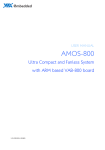
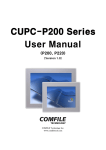
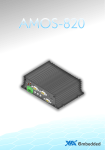
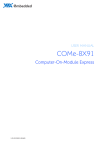
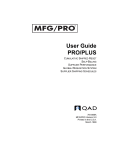
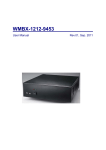
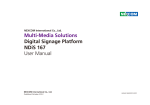
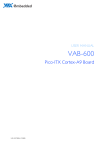
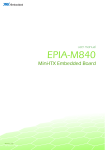
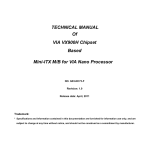
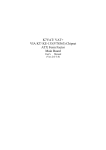

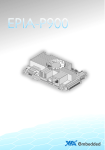
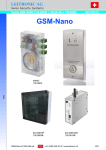

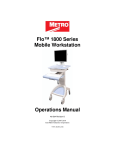

![HC1 Quick Start Guide [English] (P/N 72-165008](http://vs1.manualzilla.com/store/data/006170056_1-aaed37139c5cdf39c012e3341930ae62-150x150.png)
